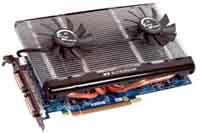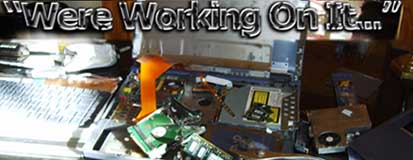Sorry Skligmund, I've been off socket A now for a few weeks, it's definitely history!

Mind you, a tweaked out nForce2 rig on socket A should run just about anything well.
I just love the "fear factor" associated with overclocking.
And it probably should be feared. The knowledge required to do it right is not so easy and straightforward as many think.
Successful overclocking requires that you understand the PC's architecture and the many relationships within that technology. I have always overclocked, but conservatively, and learned mostly by trial and error. So far, I haven't damaged any component by doing that, at least not that I'm aware of.
The experienced overclocker may think, "just wind up the bus speed and tweak the ram timings", but when you sit down and analyze the required knowledge carefully, it's really quite complex.
One also needs a software tool kit he knows inside out so the system can be analysed and monitored until stability is achieved and verified.
Not only that, but the hardware should be chosen carefully with a view to overclocking in advance in order for your best chance of success.
If you have heard or experienced any "overclocking disaster" stories, then they were likely associated with ignorance or error.
I have really experimented a lot, and goofed up a lot, and I still haven't managed to break anything. I mean, who else attaches old heatsinks from the re-cyclers to their brand new nForce4 mainboards with rubber bands?
Rubber bands tend to let go within a few hours, that's a handy hint! So if your newly modified PC happens to blue screen crash with a chipset overheat, it would probably pay to attach the heatsinks with something a bit more substantial.


 Mainboard: Asus P5K-Premium, CPU=Intel E6850 @ x8x450fsb 3.6ghz, RAM: 4gb PC8500 Team Dark, Video: NV8800GT, HDD: 2x1Tb Samsung F3 RAID-0 + 1Tb F3, PSU: Antec 550 Basiq, OS: Win7x64, Display: 24&
Mainboard: Asus P5K-Premium, CPU=Intel E6850 @ x8x450fsb 3.6ghz, RAM: 4gb PC8500 Team Dark, Video: NV8800GT, HDD: 2x1Tb Samsung F3 RAID-0 + 1Tb F3, PSU: Antec 550 Basiq, OS: Win7x64, Display: 24&








